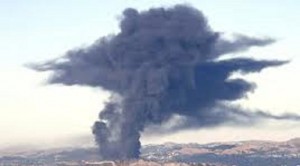Calif. releases final report, preventive steps for oil refinery safety
SACRAMENTO, Calif. – After more than 18 months, the California’s Interagency Working Group on Refinery Safety (Working Group) released its final report with recommendations to improve public and worker safety at and near oil refineries.
A task force is already overseeing implementation of many recommendations and will meet regularly to ensure the report’s goals are met.
New refinery inspectors have been hired to ensure facilities’ compliance with health and safety laws. A new reporting system has been established to help improve oversight and ultimately provide more information to the public. The governor’s proposed budget for next year will further increase resources for refinery safety and enforcement.
Following the Aug. 2012 explosion at Chevron’s Richmond Oil Refinery, Governor Jerry Brown convened the 13-agency Working Group to examine ways to improve public and worker safety.
The Interagency Refinery Task Force, established in Aug. last year, is overseeing progress on the Working Group’s recommendations, and will meet bimonthly to ensure that the recommendations are implemented.
Article continues after this advertisement“Our findings and recommendations were shaped by input from refinery workers, community members, industry leaders and local and state agencies,” said Matt Rodriquez, California Secretary for Environmental Protection.
Article continues after this advertisement“Our goal is improving safety practices at refineries to make them better neighbors and better employers, and developing more reliable and effective emergency response plans.”
The report details recommendations to improve emergency response and preparedness, to require inherently safer systems to prevent hazardous events and to improve community awareness and emergency alerts.
Specific recommendations include:
· Coordinating regulatory activities to avoid duplication and increase effectiveness;
· Establishing clear criteria for unified response during emergencies and aligning
radio communications between industry firefighters and local first responders;
· Improving information and data flows from refineries to the public and state and
local agencies;
· Requiring refineries to implement inherently safer systems to prevent
emergencies and better protect workers and neighboring communities;
· Strengthening enforcement capacity to ensure adequate oversight of refineries; · Assessing operational safety and organizational structures at refineries to reduce human factors such as lack of training, insufficient experience or fatigue that can cause hazards;
· Providing greater community access to air quality monitoring information in and
around refineries.
“These recommendations present an opportunity to make real and lasting improvements in refinery safety and oversight that will benefit everyone: workers and contractors, communities, first responders, the refinery operators themselves and our natural resources,” said Department of Industrial Relations Director Christine Baker.
“We’re working hard to implement these recommendations and are more than doubling the staff who enforce refinery safety regulations.”
The final report, “Improving Public and Worker Safety at Oil Refineries,” emphasizes the importance of providing more information to allow communities to better understand safety issues at local refineries.
Additionally, the report places a greater emphasis on the importance of inherently safer system design and recommends a clearer hierarchy of safer operations to guide California’s regulatory approach. A draft report was previously issued in July.
The report is the product of an 18-month effort by multiple state agencies, including the Air Resources Board; the California Environmental Protection Agency; the Governor’s Office of Emergency Services; the California Technology Agency; the Department of Finance; the Department of Public Health; the Department of Industrial Relations; the Department of Toxic Substances Control; the Division of Occupational Safety and Health; the Labor and Workforce Development Agency; the Office of the State Fire Marshal; and the State Water Resources Control Board.
